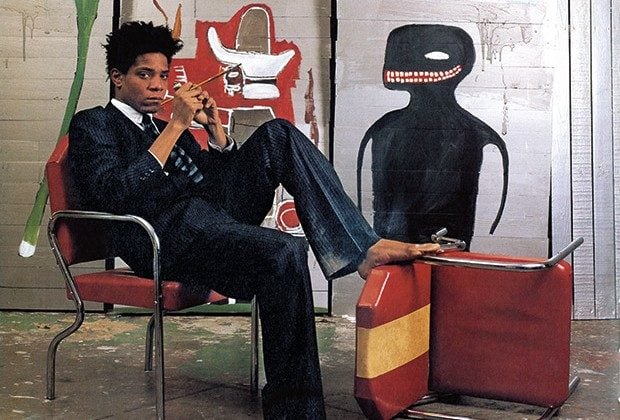
It began some five years ago with a startling question: A woman I barely knew asked was I responsible for the death of Jean-Michel Basquiat. I said no, and asked where that idea had come from? It was something she had heard, she said.
Over the following weeks I heard the accusation again. And again. The origin, I learned, was the Radiant Child, a documentary directed by Basquiat’s former girlfriend, Tamra Davis. During the course of this scene, the writer Glenn O’Brien discusses the artist’s drug overdose and observes that he had been really worried “about an article that Anthony Haden-Guest was writing for New York magazine.”
Thanks for the mention, Glenn. But that wasn’t quite the way it was.
Yes, I had been commissioned to write a profile of Basquiat, though by Vanity Fair, not by New York. It was to be about his remarkable career, with the timely touch that he was kicking heroin. So I had a first interview with him in his studio on Great Jones. He was open to difficult subjects, such as his family, and told me that he was “controlling” his heroin use. I set off to do the other stuff one does before getting back to him for a second interview. But then the collector Ethel Scull telephoned. “Anthony,” she said. “You are putting Jean-Michel under a lot of pressure.”
Meaning: Basquiat was still trying to kick drugs and that this project was not helpful.
No problem, I said. I would take care of it. I called Basquiat and told him I would put the story off until he was up for it.
Time passed.
I didn’t see the artist again until about one in the morning on a Friday night in August 1988, in Club MK on West 16th Street.
I hadn’t known it was him right away. He looked fuller, both in body and face.
“That is you, Jean-Michel?” I asked.
“Yeah… ” He said. He was missing a front tooth.
I would learn that he had just returned from a trip to Hawaii. He OD’d very shortly after.
Then I did write the Vanity Fair article, both as a celebration and an obituary. In that piece I quoted Glenn O’Brien a couple of times. Of Basquiat’s OD he spoke thusly: “Everybody was sitting around, waiting for him to do what he did, so he could be the Jimi Hendrix of art. He burned out his body, I guess. But I don’t think he intended to die—I think he could have recovered.”
Next time I saw O’Brien I told him that his account in the Radiant Child was inaccurate. But clearly Basquiat had complained to him, presumably about the same time that Scull had called me, so I didn’t suspect malice; perhaps I was insufficiently outspoken.
Recently I was sent a snippet from a new book O’Brien has written about another dead, young artist—Dash Snow. It reads: “Basquiat was living in fear of a forthcoming article in New York Magazine that Anthony Haden-Guest was writing. By the time it came out, he was dead. The shadow of that piece hadn’t helped things.”
Yes, being pursued by a shadow must be pretty unpleasant.